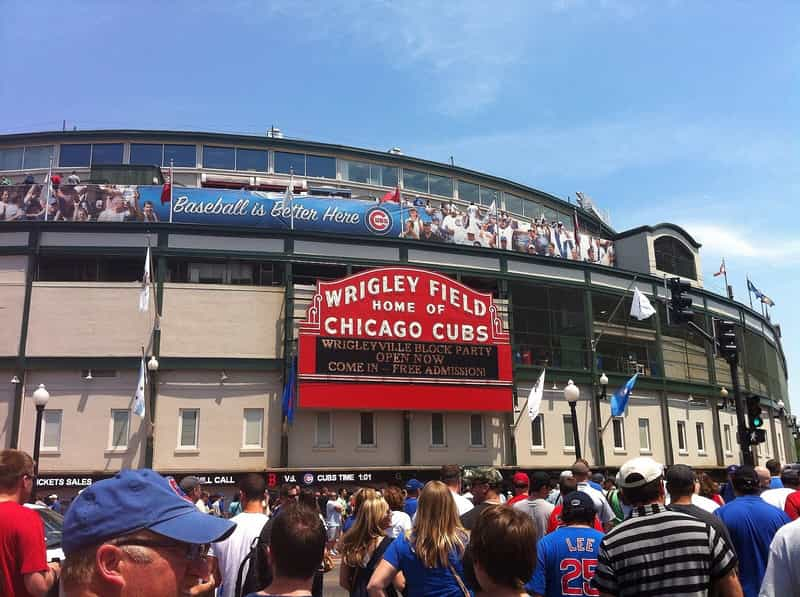Fort Dearborn
Old Fort Dearborn, erected in 1803
Map of Fort Dearborn by Captain John Whistler, 1808
Barracks of Second Fort Dearborn, 1856
How did Fort Dearborn impact Chicago?
Fort Dearborn was a wooden stockade built in 1803 on the south bank of the Chicago River. It was located at the mouth of the river, at the intersection of modern-day Michigan Avenue and Wacker Drive. Bronze markers embedded in the sidewalk today mark where the walls of the fort once stood.
The fort was the U.S. Army’s westernmost outpost in the early 19th century and marked the first major investment on new federal land in this region. Around the fort, there were a few homes and John Kinzie’s fur trading post. This settlement signaled the arrival of Europeans and European Americans to the Chicago area. The fort marked an advance into Native American land. As a result, Native Americans and U.S. Army troops fought periodically. In the Battle of Fort Dearborn (part of the War of 1812), Potawatomi Native Americans burned the fort down, but it was rebuilt in 1816 on the same site.
The settlement at the mouth of the Chicago River was eventually joined by new riverfront enclaves—among them a settlement at Wolf Point. Here citizens with names now enshrined in Chicago’s streets and neighborhoods (such as Archibald Clybourn and John Noble) gathered around a general store, a church, a hotel, a factory and several taverns.
Fort Dearborn was decommissioned in 1840 and the city’s growth chipped away at it until it finally came down in 1857. The fort’s forested reserve was deeded to the brand new City of Chicago in 1837. The Loop and Lakefront Park (today known as Grant Park) would take shape on the land.
Fort Dearborn is commemorated as one of the four red stars on the Chicago flag. The fort established Chicago’s core and its early pattern of growth. More than 200 years after it was built, Chicago is still centered on the few acres just south of where the Chicago River meets Lake Michigan.

























